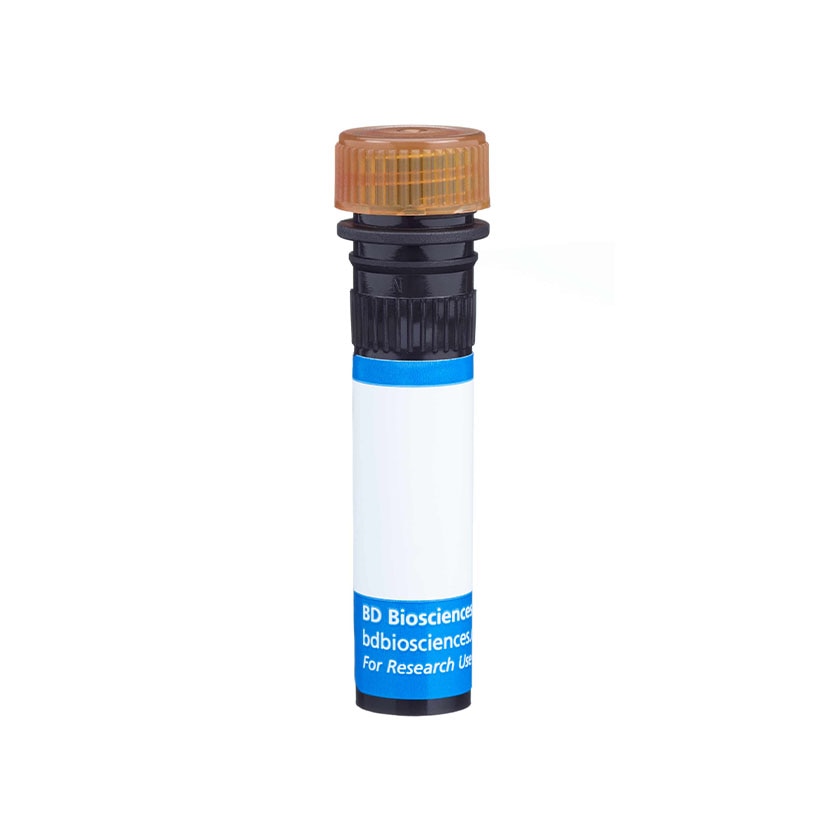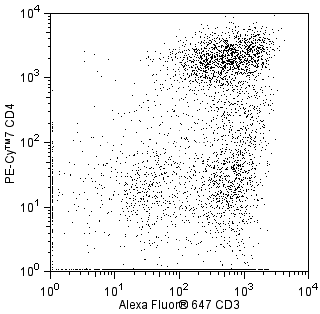-
抗体試薬
- フローサイトメトリー用試薬
-
ウェスタンブロッティング抗体試薬
- イムノアッセイ試薬
-
シングルセル試薬
- BD® AbSeq Assay | シングルセル試薬
- BD Rhapsody™ Accessory Kits | シングルセル試薬
- BD® Single-Cell Multiplexing Kit | シングルセル試薬
- BD Rhapsody™ Targeted mRNA Kits | シングルセル試薬
- BD Rhapsody™ Whole Transcriptome Analysis (WTA) Amplification Kit | シングルセル試薬
- BD Rhapsody™ TCR/BCR Profiling Assays (VDJ Assays) | シングルセル試薬
- BD® OMICS-Guard Sample Preservation Buffer
- BD Rhapsody™ ATAC-Seq Assays
-
細胞機能評価のための試薬
-
顕微鏡・イメージング用試薬
-
細胞調製・分離試薬
-
- BD® AbSeq Assay | シングルセル試薬
- BD Rhapsody™ Accessory Kits | シングルセル試薬
- BD® Single-Cell Multiplexing Kit | シングルセル試薬
- BD Rhapsody™ Targeted mRNA Kits | シングルセル試薬
- BD Rhapsody™ Whole Transcriptome Analysis (WTA) Amplification Kit | シングルセル試薬
- BD Rhapsody™ TCR/BCR Profiling Assays (VDJ Assays) | シングルセル試薬
- BD® OMICS-Guard Sample Preservation Buffer
- BD Rhapsody™ ATAC-Seq Assays
- Japan (Japanese)
-
Change country/language
Old Browser
Looks like you're visiting us from {countryName}.
Would you like to stay on the current country site or be switched to your country?




Multicolor flow cytometric analysis of CD4 expression on pig peripheral blood lymphocytes. Pig whole blood was stained simultaneously with PerCP-Cy™5.5 Mouse Anti-Pig CD4a antibody (Cat. No. 561474) and Alexa Fluor® 647 Mouse Anti-Pig CD3ε antibody (Cat. no. 561476). The erythrocytes were lysed with BD PharmLyse™ Lysing Buffer (Cat. No. 555899). Two-color flow cytometric dot plots showing the correlated expression of CD4a versus CD3 were derived from gated events with the forward and side light-scatter characteristics of viable lymphocytes. Flow cytometry was performed using a BD™ LSR II Flow Cytometer System.


BD Pharmingen™ PerCP-Cy™5.5 Mouse Anti-Pig CD4a

Regulatory Statusの凡例
Any use of products other than the permitted use without the express written authorization of Becton, Dickinson and Company is strictly prohibited.
Preparation and Storage
Product Notices
- An isotype control should be used at the same concentration as the antibody of interest.
- Please refer to www.bdbiosciences.com/us/s/resources for technical protocols.
- Caution: Sodium azide yields highly toxic hydrazoic acid under acidic conditions. Dilute azide compounds in running water before discarding to avoid accumulation of potentially explosive deposits in plumbing.
- For fluorochrome spectra and suitable instrument settings, please refer to our Multicolor Flow Cytometry web page at www.bdbiosciences.com/colors.
- Cy is a trademark of Amersham Biosciences Limited. This conjugated product is sold under license to the following patents: US Patent Nos. 5,486,616; 5,569,587; 5,569,766; 5,627,027.
- Please observe the following precautions: Absorption of visible light can significantly alter the energy transfer occurring in any tandem fluorochrome conjugate; therefore, we recommend that special precautions be taken (such as wrapping vials, tubes, or racks in aluminum foil) to prevent exposure of conjugated reagents, including cells stained with those reagents, to room illumination.
- PerCP-Cy5.5 is optimized for use with a single argon ion laser emitting 488-nm light. Because of the broad absorption spectrum of the tandem fluorochrome, extra care must be taken when using dual-laser cytometers, which may directly excite both PerCP and Cy5.5™. We recommend the use of cross-beam compensation during data acquisition or software compensation during data analysis.
- PerCP-Cy5.5–labelled antibodies can be used with FITC- and R-PE–labelled reagents in single-laser flow cytometers with no significant spectral overlap of PerCP-Cy5.5, FITC, and R-PE fluorescence.
- This product is subject to proprietary rights of Amersham Biosciences Corp. and Carnegie Mellon University and made and sold under license from Amersham Biosciences Corp. This product is licensed for sale only for research. It is not licensed for any other use. If you require a commercial license to use this product and do not have one return this material, unopened to BD Biosciences, 10975 Torreyana Rd, San Diego, CA 92121 and any money paid for the material will be refunded.
- Since applications vary, each investigator should titrate the reagent to obtain optimal results.
関連製品




The 74-12-4 (also known as clone PT4) monoclonal antibody specifically binds to CD4, a 55-kDa antigen expressed on T lymphocytes. This antibody does not react with CTL effectors, CTL precursors, or NK cells (ie, CD8[bright] cells) and it does not cross-react with human or bovine cells. Two peripheral T-helper lymphocyte phenotypes can be distinguished in the pig: CD4+CD8- and CD4+CD8[dull]. mAb 74-12-4 has been reported to inhibit proliferative responses of peripheral blood lymphocytes to mitogen, soluble antigen, and alloantigen. It is only marginally effective for in vivo depletion of peripheral CD4+ T cells. Two alloantigenic forms of CD4 have been recognized in miniature swine based upon their recognition (CD4.1) or lack of recognition (CD4.2) by mAb 74-12-4; the CD4.2 phenotype displays an autosomal recessive, non-MHC-linked, pattern of inheritance. The molecular basis for the polymorphism is a cluster of nucleotide differences leading to multiple amino-acid substitutions in the Ig CDR2-like loop structure. This mAb was clustered as anti-CD4a at the First International Swine CD Workshop. It has been reported to crossreact with chicken leukocytes.

Development References (10)
-
Brodersen R, Bijlsma F, Gori K. Analysis of the immunological cross reactivities of 213 well characterized monoclonal antibodies with specificities against various leucocyte surface antigens of human and 11 animal species. Vet Immunol Immunopathol. 1998; 64(1):1-13. (Biology). View Reference
-
Dato ME, Kim YB. Characterization and utilization of a monoclonal antibody inhibiting porcine natural killer cell activity for isolation of natural killer and killer cells. J Immunol. 1990; 144(11):4452-4462. (Immunogen). View Reference
-
Gustafsson K, Germana S, Sundt TM, Sachs DH, LeGuern C. Extensive allelic polymorphism in the CDR2-like region of the miniature swine CD4 molecule. J Immunol. 1993; 151(3):1365-1370. (Biology). View Reference
-
Pescovitz MD, Lunney JK, Sachs DH. Murine anti-swine T4 and T8 monoclonal antibodies: distribution and effects on proliferative and cytotoxic T cells. J Immunol. 1985; 134(1):37-44. (Biology). View Reference
-
Pescovitz MD, Lunney JK, Sachs DH. Preparation and characterization of monoclonal antibodies reactive with porcine PBL. J Immunol. 1984; 133(1):368-375. (Biology). View Reference
-
Saalmuller A, Aasted B, Canals A, et al. Analyses of mAb reactive with porcine CD8. Vet Immunol Immunopathol. 1994; 43(1-3):249-254. (Biology). View Reference
-
Saalmüller A, Aasted B, Canals A. Summary of workshop findings for porcine T-lymphocyte antigens. Vet Immunol Immunopathol. 1994; 43(1-3):219-228. (Biology). View Reference
-
Smith CV, Sablinski T, Arn JS, et al. In vivo treatment with monoclonal antibodies directed against CD4 and CD8 antigens in miniature swine. J Immunother Emphasis Tumor Immunol. 1994; 16(2):105-114. (Biology). View Reference
-
Sundt TM, LeGuern C, Germana S. Characterization of a polymorphism of CD4 in miniature swine. J Immunol. 1992; 148(10):3195-3201. (Biology). View Reference
-
Suzuki T, Sundt TM 3rd, Mixon A, Sachs DH. In vivo treatment with antiporcine T cell antibodies. Transplantation. 1990; 50(1):76-81. (Biology). View Reference
Please refer to Support Documents for Quality Certificates
Global - Refer to manufacturer's instructions for use and related User Manuals and Technical data sheets before using this products as described
Comparisons, where applicable, are made against older BD Technology, manual methods or are general performance claims. Comparisons are not made against non-BD technologies, unless otherwise noted.
For Research Use Only. Not for use in diagnostic or therapeutic procedures.
Report a Site Issue
This form is intended to help us improve our website experience. For other support, please visit our Contact Us page.